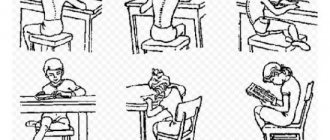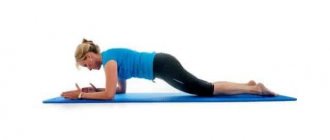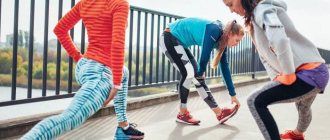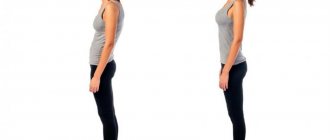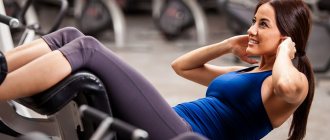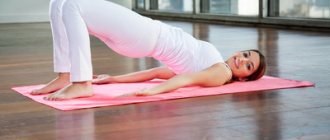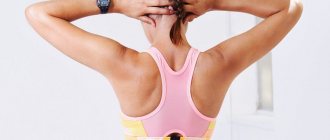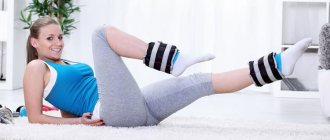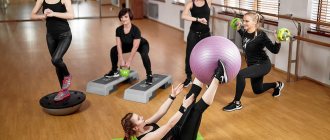Body balance is important, as is emotional stability and physical balance. Developing your body and balance with BOSU.
If you are bored with dumbbells, barbells, body bars and fitballs that have already become familiar, then feel free to sign up for a training session with BOSU.
BOSU is an unstable surface, it is also called a hemisphere, a balance platform. Its appearance resembles half of a fitball with a plastic surface. The name BOSU comes from the abbreviation Both Sides Up, which translates as “both sides up”, either a springy inflatable or a flat base, which makes training with this equipment universal.
Typically, the soft side is used for aerobic and strength training, and when the surface is inverted, it becomes a tool for developing balance and coordination. The weight of the platform is approximately 7 kg, so it can be safely used as a weighting device for strength exercises.
This is interesting!
Bosu was invented in 1999 by trainer and exercise physiologist David Weck. David was involved in an accident and suffered from back pain as a result of his injuries; he tried various exercise routines. He soon discovered that balance exercises could significantly improve his back condition. So, in 2000, the first unstable platform was released.
The BOSU platform is most popular among skiers, snowboarders, cyclists, surfers, hockey players and other athletes who need professional development of agility, speed and balance. Recently, classes at BOSU began to be held in almost many fitness centers.
Bodymaster.ru recommends Training Plans:
BOSU Squats
You can do several types of squats on the platform. Jump squats, static squats, one-legged squats and squats on different sides of the surface.
Squats on the soft side
Turn the platform with the soft side facing up. Stand on it with both feet, squat until the line from your knee to your hip is parallel to the floor. Return to the starting position. Try to keep your balance. Repeat 10-15 times.
Squats on the hard side
If you want to make squats more difficult, try turning the platform over, now with the soft side down, and stand with both feet on the plastic surface. In this case, your feet will be shoulder-width apart.
Improving body balance and confidence: 5 exercises for posture.
During a conversation, we most often sit or stand. The way we do this provides information both about ourselves and about our internal state. A balanced demeanor is the basis of irresistible charm. Taking this or that position, taking this or that pose, we give certain signals. How to maintain equanimity and calm in any situation when you are sitting or standing? This is what this exercise system is designed for.
During a conversation, we most often sit or stand. The way we do this provides information both about ourselves and about our internal state. A person unconsciously demonstrates whether he feels sympathy or hostility towards the interlocutor.
A balanced demeanor is the alpha and omega of irresistible charm. Taking this or that position, taking this or that pose, we give certain signals. How to remain equanimous and calm in any situation when you are sitting? The following exercises are provided to develop these skills.
An important role here will be played, first of all, by a stable position of the legs and feet, as well as a balanced, balanced position of your body, neck and head. When you sit, the bones that matter most are those located at the bottom of your pelvis (the sit bones), and you can feel them when you sit on your hands.
It is important not just to learn different positions that should have one effect or another, but to develop a sense of balance when you sit. With this natural sense, you will automatically assume a balanced posture in all situations.
Balanced posture allows us to sit, stand and move with minimal muscular effort. This is possible if our body is balanced around its center of gravity. The point is precisely to avoid these unnecessary efforts.
Balanced posture means that our entire body, in all life situations, is in a state of balance relative to its center of gravity, achieving balance with minimal effort.
With these exercises, you can develop a natural sense of balanced posture when sitting. This will help you increase your charm.
Exercise 1. Leg heaviness
Mentally divide the surface of the chair into three parts. You may now be sitting in the back third of a chair, with your buttocks almost sandwiched between the surfaces of the seat and back of the chair.
- Slide to the front third of the seat. Make yourself comfortable. Rotate back and forth a little. Shift your body weight from one buttock to the other several times. Place your feet on the floor parallel to each other at a short distance.
- Relax your arms and lower them along your body. Straighten your body, starting at your lower back, and continue upward to your cervical spine.
- Place your hands on your hips, one hand's distance from your knee. Simultaneously tighten the thigh muscles of both legs for three seconds. Feel the tension under your palms. Then just leave your hands resting on your hips.
- Pause for five seconds. Raise your right leg so that it does not touch the floor. Feel how hard your thigh muscle must tense to lift your leg. Leave your leg elevated for two seconds and then slowly lower it to the floor. Now lift your left leg and also feel the tension in your thigh muscles. Feel the heaviness of your legs.
- Pause for seven seconds. Grab your right leg at the hip with both hands and lift it without using your thigh muscles. Please note that the body should not lean forward. After three seconds, let your foot fall to the floor without making any muscular effort.
- Repeat the above steps with your left leg. Leave your feet exactly where they were when you released your feet. The soles of your feet may feel itchy or throbbing. Relax your arms and lower them along your body.
More on the blog: The impact of Mirror Neurons on our lives
By completing this exercise, you have created a good foundation for developing balanced posture: your feet are now balanced on the floor.
Exercise 2. “Ballet of the buttocks”
Sit in the same position in which you performed the previous exercise. Eyes must be closed while performing.
- Shift your body weight to your left buttock so that your right one rises. Your arms hang relaxed at your sides. Please note that your feet should not leave the floor during this one-sided weight transfer.
- Place the fingertips of your right hand together and feel the right ischium in the lower part of the buttock, which is especially prominent in thin people.
- Using your fingertips, press lightly on the end of the ischium, then release the pressure again without removing your fingers. Then slowly and gently move your fingertips up to the top edge of your pelvis.
- Now move your right hand sideways and down. At the same time, try to balance your body weight on the tip of the sit bone that you previously felt. The left buttock will rise.
- Repeat the exercise for your left arm and left buttock. The only difference is this: at the end of the exercise, again distribute your body weight evenly between both sit bones. This will be easier if you turn from side to side two or three times without lifting your pelvis from the chair. The eyes are closed, feet are on the floor, arms hang along the body.
Consciously sitting on your sit bones is important for any posture, whether you are moving forward while working and eating, or taking up the entire surface of a chair or armchair during interviews and business negotiations.
Exercise 3. Rolling
Sit on a chair. Your weight rests on your sit bones. Now focus your attention on the lumbar spine. Close your eyes.
- Bend forward, being aware of this movement. Now slowly arch your lumbar spine in the opposite direction as far back as possible.
- Feel as you slowly move from one position (lower arched forward) to another (lower arched backward) at what point your lower back is in a balanced position.
- Enjoy moving your spine around the inner center line. Move forward and backward very slowly.
More on the blog: Difficulties are part of your goal
If in the previous exercise (“buttock ballet”) you balanced your body horizontally (right-left), then with the help of this exercise you achieved a state of vertical balance (back and forth). This creates the essential foundation for balanced posture.
Exercise 4. How to take an upright position
- Stand on the floor with your feet shoulder-width apart. If possible, perform this exercise barefoot. Consciously feel the floor under your feet.
- Straighten your torso and raise your head. The arms hang freely along the body.
- Now slowly bend and straighten your knees several times. You will feel that as your knees straighten, your pelvis moves forward and your buttocks move back. This puts you in a position where there is increased stress on the lower back, causing tension in the muscles responsible for this area. If you bend your knees, the opposite happens: the pelvis moves back, and the lumbar region relaxes and “falls” down.
- Try to feel when you are in a balanced position. You will see that you can only take a relaxed position when your knees are slightly bent.
- Run your hands along the lateral lines of the pelvis towards the groin. Your fingers, as before, should be directed towards the floor. Feel the groin line with your wrists.
- Make a motion as if you were to move something down with your hands to feel the muscles of your thighs. Slowly bend and straighten your knees at the same time.
- If you do this exercise slowly and at the same time carefully observe your own body, then after a few minutes you will feel that your legs, or rather your hips, seem to be fixed in a relaxed position. This is a very important point. You will be able to feel that there is no need to support your body at all while it is in a position of balance.
- Now remove your palms from your hips and relax your arms so that they hang calmly along your body. Allow your body to straighten, rocking back and forth minimally.
Exercise 5. Movable body
So, you have brought your legs and pelvis, as well as your lumbar spine, into a straight, balanced position. Now you need to deal with the thoracic spine and chest.
- Stand up and take the balanced position you practiced in the previous exercise.
- Move the body part forward above the sternum to the cervical spine. Only a small movement is required.
- Bend back in the opposite direction. Perform these movements with increasingly smaller amplitudes until you find a balanced position.
Author: Matthias Nollke, German psychologist, author of studies on creativity and the development of creative abilities. The material is published in an abbreviated and adapted translation from German.
Source
Read our classified materials
Bodymaster.ru recommends Fitness Trainers:
Do you feel it? -It’s already difficult to stay on such a platform without shaking. Now try to squat. This exercise perfectly uses, in addition to the leg muscles, stabilizer muscles.
Static chair squat on the hard side BOSU
Place the Bosu platform with the soft side down, squat so that the line from your knee to your hip is parallel to the floor. Stay in this position for 20-30 seconds. To complicate this exercise, you can hold an 8-12 kg weight in your hands.
Plank on BOSU
Plank on the soft side
Place the Bosu platform with the soft side up, resting your elbows in the center so that your elbows are perpendicular to your shoulder. Straighten your legs and assume a plank position. Stay in this position for a minute.
Dynamic bar on the soft side
Place your bosu with the soft side facing up, place your palms on the surface of the platform and extend your legs into a plank position. Alternately lower yourself onto your elbows and rise back up onto your palms. Repeat the exercise 30 times.
Plank on the hard side
Place the bosu with the soft side down, rest your palms on the edges of the platform, extend your legs and get into a plank position with your arms straight. Try to keep your balance. Stay in this position for 1 minute.
Barefoot push-ups
There are also several types of barefoot push-ups.
Push-ups on the soft side with moving to the side
Place the Bosu platform with the soft side facing up. Place one hand in the middle of the platform, the other on the floor. Do a push-up. And immediately shift to the other side, swapping your hands, and do push-ups again. Repeat this exercise 10 times.
Push-ups with feet on the soft side of the platform
Place the bosu with the soft side up, resting your feet in the middle of the platform. Get into a push-up position. Lower your body by bending your elbows and return to the starting position. Repeat 10-15 times.
Push-ups on the hard side
Place the soft side of the bosu on the floor, resting your hands on the edges of the hard surface of the platform. Bend your elbows and lower your body. Repeat push-ups 10-15 times.
Body Balance - opinion of a fitness trainer
Body balance is one of the few workouts that allows you to stretch, strengthen your muscles, and calm your nerves at the same time. Only Vinyasa Yoga is more effective, but this is a lesson for advanced ones who know the basic asanas and have good strength training. Body Balance allows any beginner to get a similar training effect. At the same time, not only does energy expenditure during training increase, but metabolism also accelerates after it.
Body Balance, according to the developers, should be combined with one of Les Mills’ aerobic workouts – Body Kombat or Body Jam. These areas not only improve endurance, but also speed up fat burning. For those who also practice strength exercises with barbells and dumbbells, 2 traditional strength training sessions and 2 Body Balance lessons are recommended.
Body Balance and its quality largely depend on the direction of the instructor’s work. It has been proven that this training is best conducted by those who have achieved perfection in each of its elements - yoga, Pilates, stretching.
Tomorrow according to the fitness plan, the morning will tell you how much, because you need to not only go to the gym, but also have time to do your work (but I will allocate at least 2 hours for fitness). I also plan to include dancing in my fitness (I haven’t decided what yet), but I think it’s time. We have several varieties of fitness, from step aerobics to oriental dancing. I need to think, try and choose what suits me best for now (as I first went mainly to Pilates, then stretch, then yoga (whichever was easier, I attended (it was at yoga that I learned how to do a bridge from the floor), and now there will be yoga or body balance, but I won’t attend stretch and pilates for now (there won’t be enough for the whole time).
Bye everyone. It's time to drink kefir and complete today's fasting with this meal.
Training on BOSU: tips
- Start small. The training should begin with a warm-up: this could be jumping on a bosu platform, push-ups with moving to the side.
- Don't overestimate your strength. At first glance, the exercises may seem simple. However, you should not perform exercises on a bosu platform with additional equipment in the form of dumbbells or weights.
- Do your workout strictly in sneakers. Choose athletic shoes that won't slip on platforms.
- If you have ligament injuries or other musculoskeletal injuries, perform the exercises under the supervision of a trainer.
Body balance.
What is body balance? - This is a balanced work of all life systems, and, above all, three processes: digestion, circulation of fluids in the body and breathing.
This means it’s time for all of us to give up poor nutrition, addiction to sugar, alcohol, smoking, a sedentary lifestyle, late going to bed and lack of sleep.
Here, each of us has something to do, each of us has tails that need to be pulled up.
Unstable mind, mood swings, “it’s never a good morning”? - Start with body balance - identify your failures and remove them from your life.
When you take simple steps, you will find that “life has improved,” the morning has become joyful and cheerful, and the day begins with a good mood.
The person is dependent.
We are dependent on air, sun, food and sleep. This must be recognized and taken into account if we want balance, good mood and a lot of energy.
If you continue to eat poorly, exercise little, go to bed late and don’t get enough sleep because of watching TV shows or chatting at night, the result will be
- gloomy morning
- unproductive day
- lack of storage and
- rollercoaster of moods and emotions.
Everything is simple, and yoga, qigong, running, swimming, walking in nature can help us.

